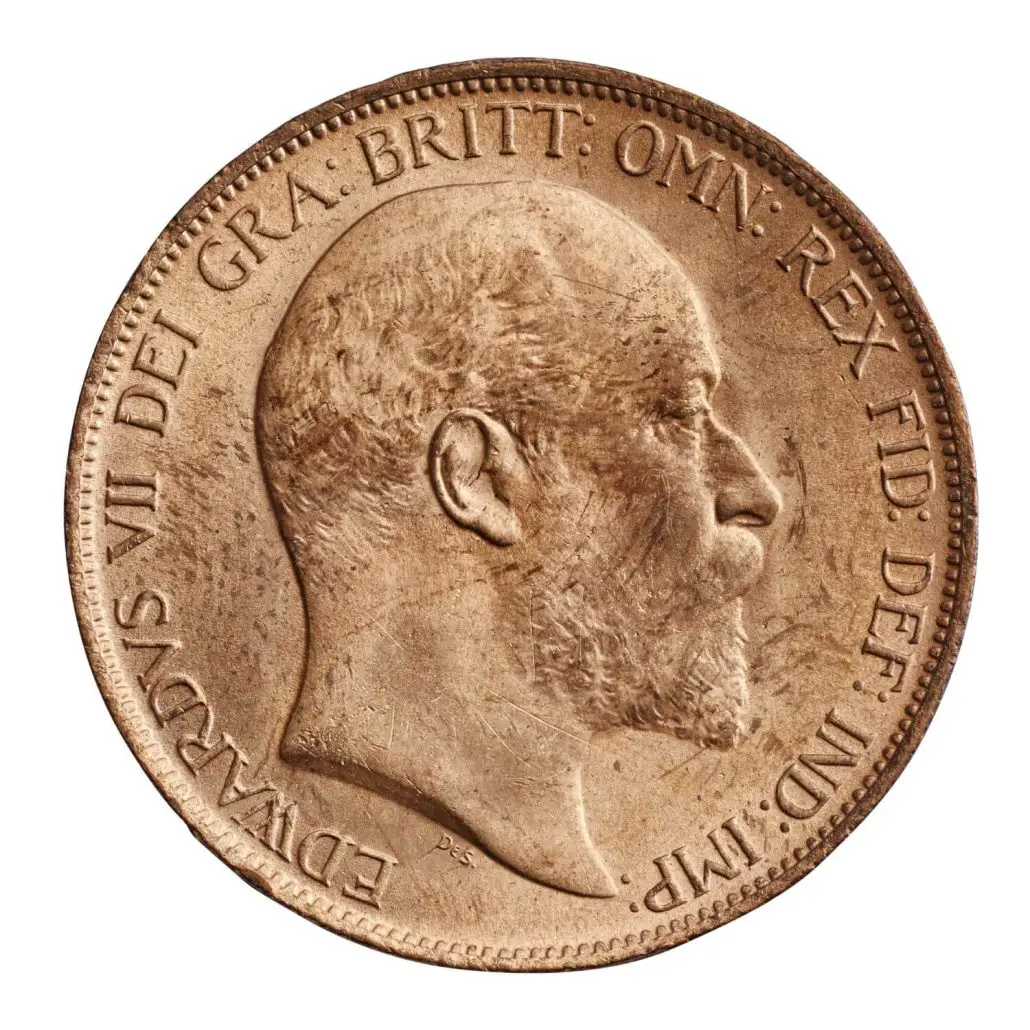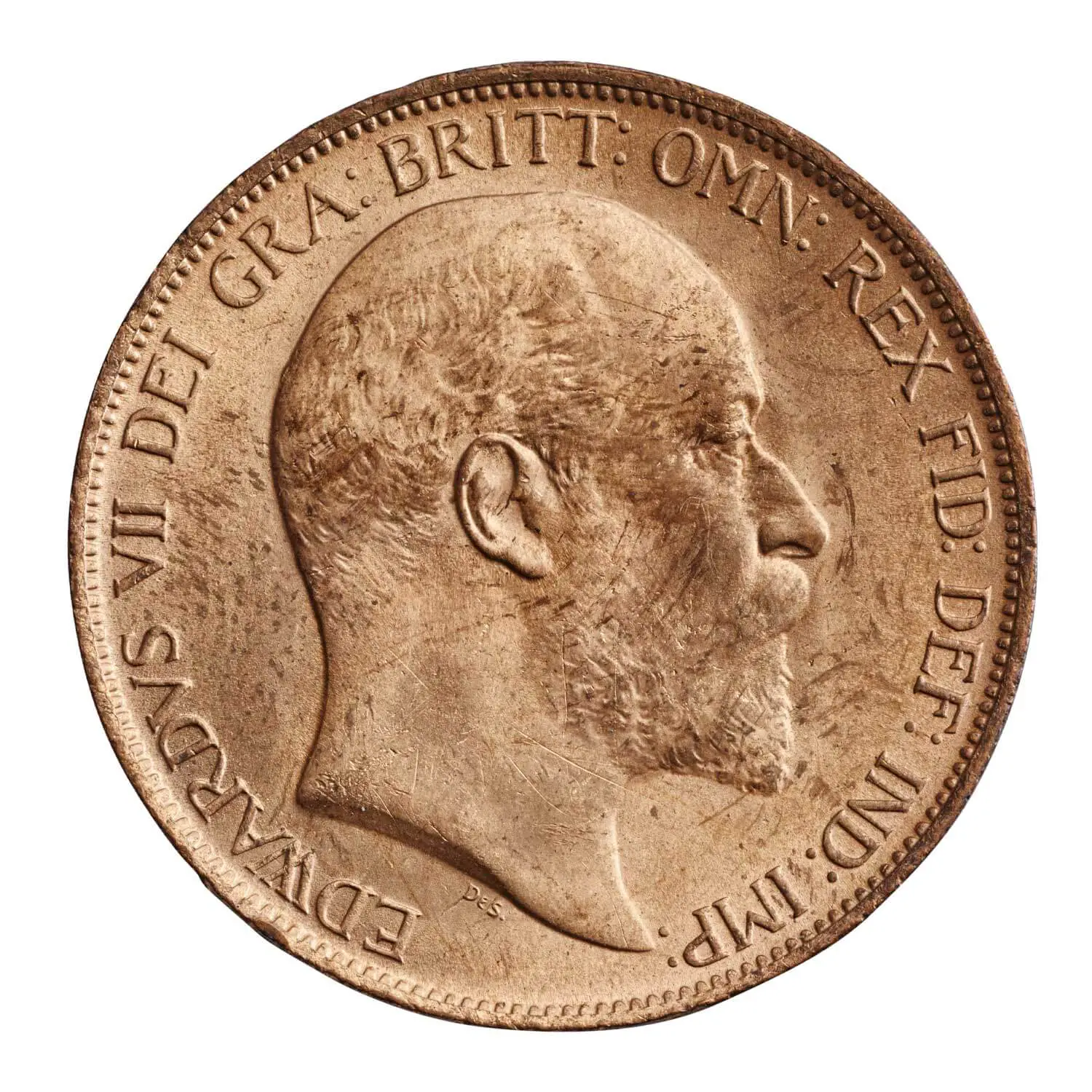The Edward VII Penny, minted in 1902, holds a special place in the world of numismatics. This bronze coin features a bare head of King Edward VII on the obverse and the iconic figure of Britannia seated with a trident and shield on the reverse. But what is the true value of this coin? Is it a rare treasure or just a worthless piece of metal? In this article, we will delve into the history, significance, and market value of the Edward VII Penny.
The Reign of Edward VII
Before we explore the Edward VII Penny, let’s take a brief look at the historical context in which it was minted. Edward VII, son of Queen Victoria, ascended to the throne in 1901 after his mother’s death. His reign lasted until 1910, and it marked a period of transition as the Victorian era gave way to the Edwardian era. The Edward VII Penny serves as a numismatic representation of this pivotal time in British history.
Design and Symbolism
The obverse of the Edward VII Penny features a bare head portrait of King Edward VII facing right. This design was created by George William de Saulles, an English engraver. On the reverse, we see the figure of Britannia seated, holding a trident and shield. The image of Britannia symbolizes Britain’s maritime power and strength. The sea with a low tide level depicted in the background further emphasizes Britain’s naval prowess.

Mintage and Rarity
The Edward VII Penny was minted from 1902 to 1910. During this period, approximately 52 million pennies were struck. While this may seem like a large number, it is important to consider factors such as wear and tear, hoarding, and the passage of time that have reduced the number of surviving coins. As a result, certain years and variations of the Edward VII Penny have become increasingly rare and valuable.
Key Varieties and Their Values
Several key varieties of the Edward VII Penny exist, each with its own unique characteristics and market value. The most sought-after varieties include the 1902 bare head and the 1902 low tide varieties. The 1902 bare head variety, featuring a portrait of Edward VII without a crown, is highly prized by collectors. On the other hand, the 1902 low tide variety, with a sea depicted at a lower level, adds an additional element of interest. These rare varieties can command high prices in the numismatic market.
| Year | Variety | Market Value |
|---|---|---|
| 1902 | Bare Head | £500 – £1000 |
| 1902 | Low Tide | £1000 – £2000 |
| … | … | … |
Condition and Grading
The condition of a coin greatly affects its value. The Edward VII Penny, like any other coin, is subject to wear and damage over time. Numismatic organizations such as the Professional Coin Grading Service (PCGS) and the Numismatic Guaranty Corporation (NGC) use a grading system to assess the condition of coins. The higher the grade, the better the condition, and subsequently, the higher the value. Collectors and investors should pay close attention to the condition of an Edward VII Penny before making a purchase or valuation.
Factors Affecting Value
Apart from rarity and condition, several other factors can influence the value of an Edward VII Penny. These factors include:
- Historical Significance: Coins that bear historical significance, such as those minted during significant events or reigns, tend to command higher prices.
- Demand and Popularity: The level of demand and popularity among collectors and investors can greatly impact a coin’s value. Coins with a strong collector following often fetch higher prices.
- Variation and Errors: Variations and mint errors can add uniqueness and desirability to a coin, thereby increasing its value. Examples include double strikes, planchet errors, and die cracks.
- Provenance: Coins with a documented and reputable provenance, such as those from famous collections or auctions, can carry a premium.
Investing in Edward VII Pennies
For those considering investing in Edward VII Pennies, it is essential to approach it with caution and proper research. While these coins can potentially appreciate in value over time, it is important to remember that the coin market can be unpredictable. Working with reputable dealers, educating oneself about the market, and seeking guidance from experienced numismatists can help make informed investment decisions.
Conclusion
In conclusion, the Edward VII Penny is far from being a worthless coin. Its historical significance, unique design, and rarity make it a highly sought-after collectible. Whether you are a passionate collector or an investor, understanding the factors that influence its value is crucial. By considering factors such as condition, rarity, and market demand, you can navigate the world of Edward VII Pennies and potentially uncover a rare treasure worth more than its weight in bronze.
